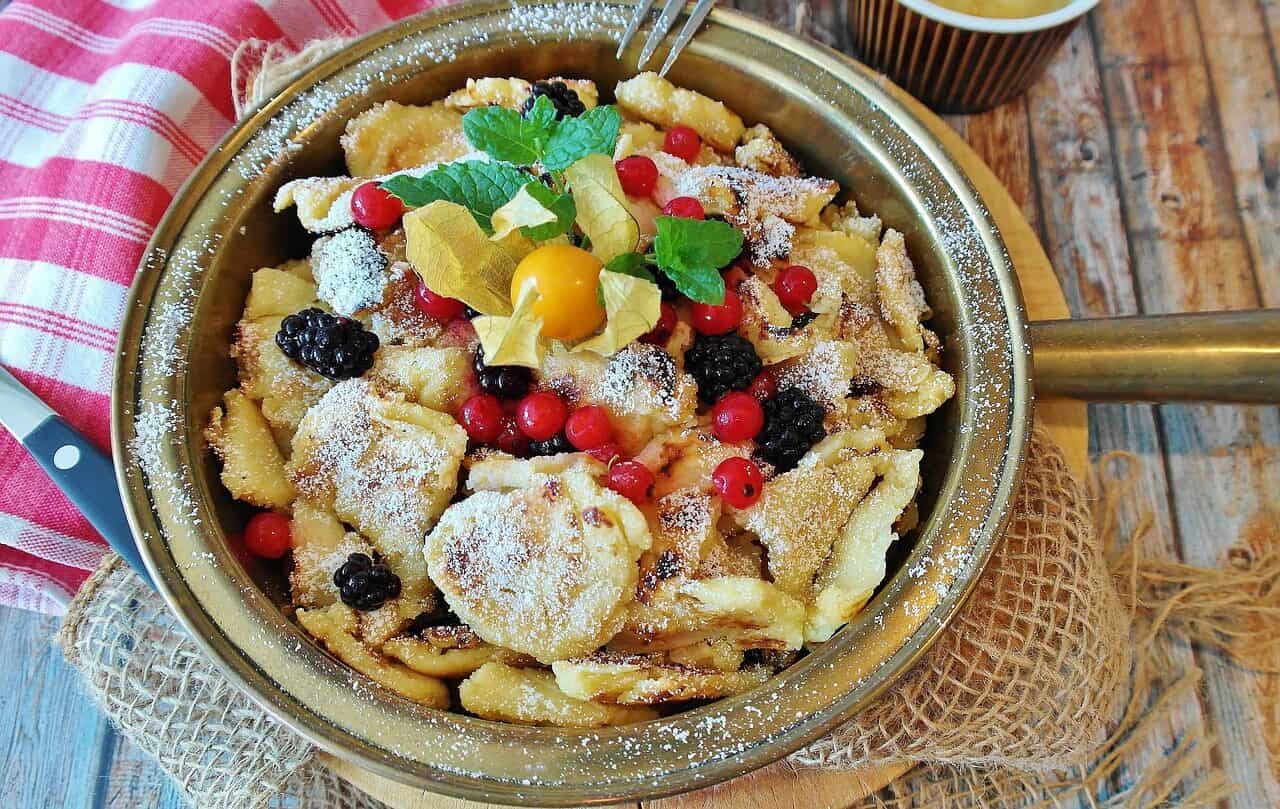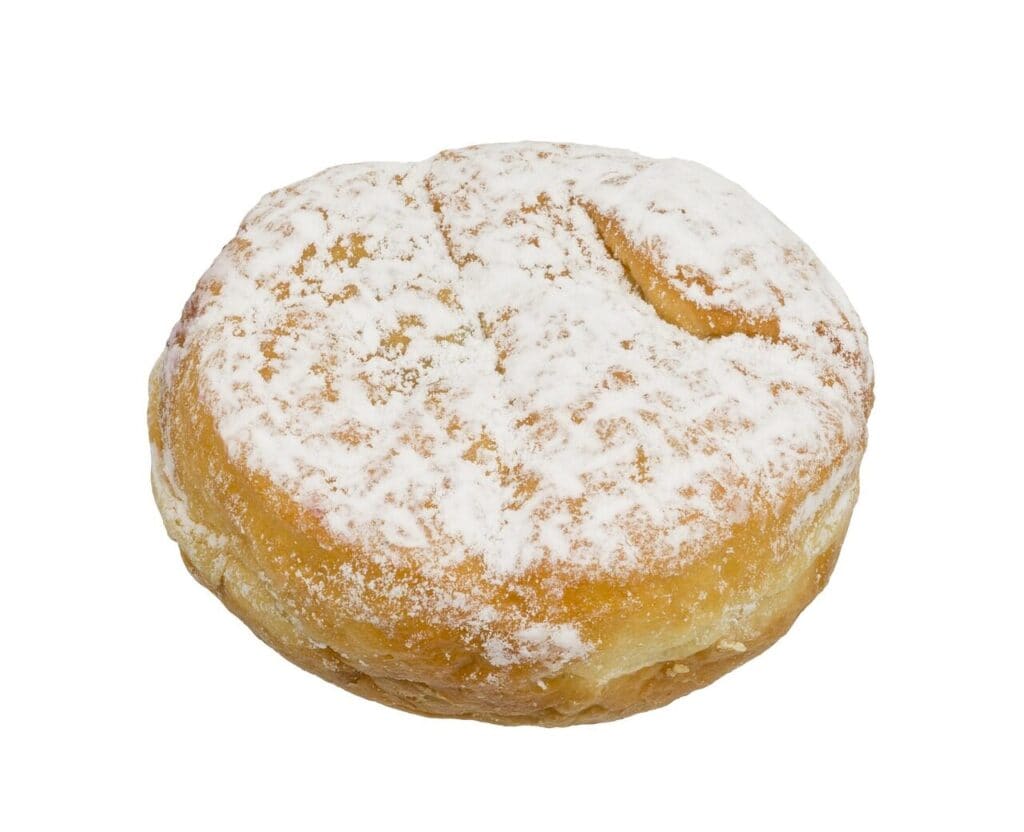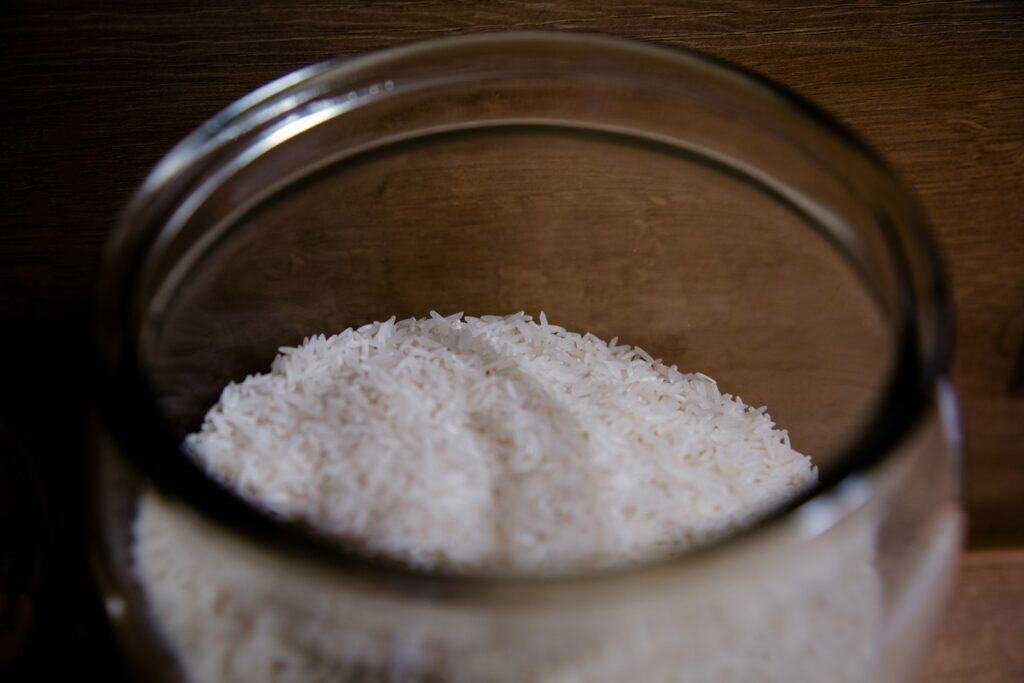Освоение ремесла: Глубокое погружение в технические принципы сахарной панировки
Введение: За пределами конфетной оболочки
Сахарная панировка - это основополагающий кондитерский процесс. Он заключается в методичном создании сахарной оболочки вокруг сердцевины. Это происходит благодаря многократному нанесению сиропа и контролируемой сушке.
Эта статья выходит за рамки простых рецептов. Мы предоставляем всесторонний технический анализ для профессионалов, которые хотят овладеть процессом с помощью научного понимания.
Достижение стабильных и высококачественных результатов в сахарной панировке - это не искусство, а наука. Понимание основных принципов - это ключ к контролю над каждым аспектом конечного продукта.
Что такое сахарная панировка?
По своей сути сахарная панировка - это постепенное наращивание покрытия вокруг центра. Этим центром может быть что угодно - от ореха или шоколадной чечевицы до кусочка сухофрукта.
Это достигается путем переворачивания центров на вращающейся сковороде при добавлении небольших, контролируемых доз сахарного сиропа. Каждый слой тщательно высушивается перед нанесением следующего.
В отличие от шоколадного панирования, которое предполагает темперирование и покрытие расплавленным шоколадом, сахарное панирование - это процесс контролируемой кристаллизации. Он также может включать в себя аморфное застывание.
Почему технический анализ имеет значение
Полагаясь только на чувства и интуицию, вы получаете непоследовательные результаты. Технический подход превращает процесс из изменчивой формы искусства в повторяющуюся науку.
Этот контроль позволяет точно определять характеристики конечного продукта. Вы можете контролировать точную толщину оболочки, хруст, степень блеска и устойчивость к хранению.
Овладев переменными, вы сможете эффективно устранять неполадки и уверенно внедрять инновации.
Дорожная карта статей
Это глубокое погружение вооружит вас знаниями, которые позволят довести ваше ремесло до совершенства. Мы рассмотрим:
- Главная наука: Кристаллизация и перенасыщение
- Критические переменные процесса и их влияние
- Пошаговое техническое описание цикла панорамирования
- Расширенный поиск неисправностей для устранения распространенных дефектов
- Оборудование и экологические соображения
Наука о кристаллизации
Весь процесс традиционной сахарной панировки регулируется физикой кристаллизации сахара. Чтобы управлять процессом, необходимо сначала понять науку, лежащую в его основе.
Это "почему", стоящее за каждым шагом. Здесь объясняется все, начиная с приготовления сиропа и заканчивая финальной фазой сушки.
Концепция перенасыщения
Раствор является насыщенным, если в нем растворено максимальное количество сахара, возможное при данной температуре. Он находится в состоянии равновесия.
Перенасыщение - это нестабильное состояние. В растворе содержится больше растворенного сахара, чем обычно может быть при данной температуре. Это является основной движущей силой кристаллизации.
Мы создаем перенасыщенное состояние в сковороде, нанося горячий концентрированный сироп. Затем мы выпариваем воду с помощью воздушного потока. Когда вода уходит, концентрация сахара превышает точку насыщения. Сахар вынужден выходить из раствора в виде твердых кристаллов.
Концентрация сахара в растворе измеряется в градусах Брикса (°Bx). Сиропы для панировки обычно начинаются с концентрации 70-75 °Bx. Они уже высококонцентрированы, чтобы способствовать эффективному перенасыщению при сушке.
Зарождение и рост кристаллов
Нуклеация - это рождение первого микроскопического кристалла. В условиях панировки это в первую очередь вторичная нуклеация. Оно вызывается контактом и трением между кувыркающимися центрами.
Как только образуется место зарождения, начинается рост кристаллов. Молекулы сахарозы из перенасыщенного сиропа откладываются на существующей кристаллической решетке. Они наращивают ее слой за слоем.
Задача опытного кондитера - обеспечить высокую скорость зарождения и контролируемый, равномерный рост кристаллов. Это создает плотную структуру микрокристаллов. В результате получается гладкая, непрозрачная и хрустящая оболочка, а не крупные, зернистые кристаллы.
Аморфный и кристаллический
Сахар может застывать в двух различных состояниях: кристаллическом или аморфном.
Кристаллическое состояние представляет собой высокоупорядоченную, повторяющуюся решетчатую структуру. Это цель для классических твердых продуктов, таких как миндаль Jordan. В результате получается непрозрачная, хрустящая оболочка. Контролируемая, относительно медленная сушка способствует развитию этой структуры.
Аморфное состояние - это неупорядоченное, некристаллическое твердое вещество, по сути, стекло. Оно образуется, когда высококонцентрированный сироп охлаждается так быстро, что молекулы не успевают выстроиться в кристаллическую решетку.
Это состояние часто бывает прозрачным и очень твердым. Ингибирующие агенты, такие как кукурузный сироп, используются для того, чтобы нарушить процесс кристаллизации и стимулировать образование аморфного состояния. Это характерно для покрытий таких продуктов, как желейные конфеты.
Важнейшие переменные при панировании
Овладеть мастерством сахарной панировки - значит овладеть набором взаимосвязанных переменных. Каждая из них действует как рычаг управления. Регулировка одного из них часто требует компенсации другого.
Понимание этих переменных и их взаимосвязи - ключ к управлению процессом и совершенствованию продукции.
Формула сиропа
Сироп - это фундаментальный строительный блок оболочки. Его состав определяет конечную текстуру, внешний вид и стабильность продукта.
Основным компонентом является сахароза. Она обеспечивает структуру и сладость. Другие сахара, например декстроза, могут быть использованы для изменения структуры кристаллов и профиля сладости.
Ингибиторы, или "дозирующие агенты", очень важны для контроля кристаллизации. Кукурузный сироп, глюкозный сироп или инвертный сахар добавляются в рецептуру, чтобы препятствовать образованию кристаллов сахарозы. Благодаря этому кристаллы становятся мелкими, предотвращая появление зернистой текстуры и способствуя более гладкому покрытию.
Связующие и другие добавки обеспечивают определенные функциональные свойства. Камедь арабика (камедь акации) является мощным пленкообразователем. Он улучшает адгезию к сердцевине и повышает прочность оболочки. Желатин используется в мягких панировках для придания жевательной текстуры.
Температура как катализатор
Температура является основным катализатором всего процесса. Она влияет как на сироп, так и на условия сушки.
Температура самого сиропа влияет на его вязкость. Более теплый сироп менее вязкий, он легче растекается и создает более тонкое и ровное покрытие. Более холодный сироп гуще и может быть нанесен более плотным слоем.
Температура воздуха для сушки напрямую контролирует скорость испарения воды. Следовательно, она контролирует скорость кристаллизации. Для стандартного твердого панирования температура воздуха для сушки обычно поддерживается в диапазоне 20-25°C (68-77°F). Это обеспечивает контролируемую сушку без образования трещин под напряжением.
Влажность: Невидимый враг
Относительная влажность (RH) - одна из самых важных и часто упускаемых из виду переменных окружающей среды. Она определяет способность воздуха поглощать влагу.
Высокая относительная влажность (>60%) значительно замедляет испарение воды из сиропа. Это увеличивает время сушки и повышает риск слипания центров (скручивания). В результате конечный продукт может получиться липким и плачущим.
И наоборот, слишком низкая относительная влажность может привести к тому, что раковина снаружи высохнет слишком быстро, а внутри останется влажной. Это создает внутреннее напряжение, которое приводит к растрескиванию или растрескиванию.
Для большинства операций по переработке сахара идеальной считается контролируемая среда с относительной влажностью менее 50%. Это позволяет добиться стабильной и эффективной сушки.
Пан Механик
Физическая механика оборудования для панирования имеет решающее значение для обеспечения равномерного покрытия.
Скорость вращения кастрюли, измеряемая в оборотах в минуту (RPM), определяет характер вращения центров. Более высокая скорость создает большее разделение и более равномерное распределение сиропа. Однако слишком высокая скорость может привести к тому, что продукт будет выброшен из кастрюли или поврежден.
Угол наклона противня также влияет на движение продукта. Более крутой угол создает более интенсивное вращение и подвергает больший объем продукта воздействию сушильного воздуха. Это повышает эффективность сушки. Меньший угол обеспечивает более мягкое перемещение.
Жесткое и мягкое панорамирование
Два основных метода сахарной панировки, твердый и мягкий, отличаются друг от друга ингредиентами, процессами и характеристиками конечного продукта. Понимание их различий - ключ к выбору правильной техники.
Характеристика | Твердое панирование (например, миндаль Джордан) | Мягкие панировки (например, Jelly Beans) |
Основная цель | Тонкая, хрупкая, хрустящая оболочка | Более толстый, мягкий, жевательный слой |
Тип сиропа | С высоким содержанием сахарозы, с низким содержанием ингибитора (например, сироп с сахарозой 70-80°Bx) | Низкое содержание сахарозы, высокое содержание ингибитора (например, кукурузного сиропа) |
Ключевая добавка | Часто нет или минимальный переплет | Связующие вещества, такие как желатин, арабик или крахмал |
Процесс | Нанесение горячего сиропа с последующей сушкой | Нанесение холодного или теплого сиропа, часто с присыпкой |
Окончательная текстура | Кристаллический, хрустящий, с высоким уровнем блеска | Крупноаморфный или микрокристаллический, мягкий прикус |
Разбивка цикла панирования
Процесс сахарной панировки представляет собой многоступенчатый цикл. Каждый этап имеет конкретную техническую цель и требует точного контроля над внесением сиропа и условиями сушки.
Мы разберем каждый шаг, начиная с подготовки сердцевины и заканчивая получением окончательного блеска.
1. Предварительная обработка / герметизация
Цель этого начального этапа - подготовить сердцевину к нанесению покрытия. Это особенно важно для нежных, жирных или кислотных центров.
Герметизирующий слой защищает сердцевину от влаги обволакивающих сиропов. Он не позволяет маслу из ореха или кислоте из фруктового центра проникнуть в сахарную оболочку, что нарушит ее структуру.
Процесс включает в себя нанесение раствора пленкообразующего вещества, такого как арабик или кондитерская глазурь. Дайте ему полностью высохнуть. Это создает непористую, однородную поверхность, которая обеспечивает отличную адгезию для последующих слоев сахара.
2. Захватывающий / увлекательный
Это основная фаза процесса строительства. Цель состоит в том, чтобы как можно эффективнее нарастить основную толщину оболочки.
Процесс состоит из повторяющихся циклов. Нанесите относительно большую дозу высококонцентрированного сиропа, а затем проведите длительную сушку с помощью мощного потока воздуха.
На этом этапе эффективность важнее идеальной отделки. Опытный оператор может использовать сенсорные сигналы, чтобы следить за ходом работы. Например, звук кувыркающихся центров будет меняться от мягкого стука к более твердому, стеклянному дребезжанию по мере накопления и затвердевания оболочки.
3. Разглаживание / отделка
После достижения нужной толщины внимание переключается с наращивания объема на создание идеально гладкой поверхности. Этот этап очень важен для получения впоследствии глянцевого покрытия.
Этот процесс включает в себя нанесение более тонкого сиропа с низкой вязкостью (часто с более низким показателем Brix) меньшими, более частыми дозами. Цель - заполнить все микроскопические ямки и дефекты, оставшиеся после этапа валовой обработки.
Время сушки и поток воздуха могут быть немного уменьшены, чтобы разбавленный сироп успел растечься и выровняться до застывания. Это гарантирует безупречный, непористый холст для окрашивания и полировки.
4. Раскраска
Задача состоит в том, чтобы нанести яркий, равномерный слой краски, не создавая пятен, разводов или крапинок.
Обычно для этого в готовый сироп добавляют жидкий или порошкообразный пищевой краситель. Цветной сироп должен быть нанесен очень аккуратно и равномерно.
Многократное, очень тонкое нанесение намного лучше, чем одно обильное. Такое постепенное наращивание обеспечивает равномерное распределение цвета по всей партии. Это предотвращает перенасыщение отдельных участков, что приводит к появлению пятен.
5. Полировка / остекление
Заключительная стадия предназначена для создания сияющего глянцевого блеска и защиты продукта от влаги окружающей среды. Это продлевает срок его хранения.
Для этого не используется сироп. Вместо этого на чистую, сухую, специальную полировочную сковороду наносится полировочное средство, например, карнаубский воск, пчелиный воск или специализированная кондитерская глазурь.
Требуется совсем небольшое количество средства. Кусочки аккуратно прокручиваются на низких оборотах, пока трение и тепло, возникающие при прокручивании, не расплавят и не распределят воск. В результате образуется микроскопическая, ультрагладкая, глянцевая пленка.
Сводка параметров процесса
Параметры каждой стадии настраиваются для достижения конкретной технической цели. В этой таблице приведены общие сведения о типичном процессе твердого панирования.
Сцена | Брикс сиропа (°Bx) | Применение сиропа | Поток воздуха / осушение | Скорость вращения панорамирования (об/мин) | Техническая цель |
Гроссинг | 75-85°Bx | Тяжелые, реже | Высокая громкость, теплый | Умеренно-высокий | Быстрое наращивание толщины оболочки |
Разглаживание | 65-75°Bx | Легкие, более частые | Умеренный объем, окружающая среда | Умеренный | Заполните дефекты, создайте гладкую поверхность |
Раскраска | 65-75°Bx (с цветом) | Очень легкий, ровный | Нежный, окружающий | Низкий-умеренный | Добейтесь равномерного распределения цвета |
Полировка | N/A (воск/глазурь) | Минимальный агент | Выключено или очень низкий уровень | Низкий | Придайте изделию блеск и запечатайте его |
Расширенное руководство по устранению неполадок
Дефекты - обычная часть процесса обучения в сахарном деле. Однако почти каждый дефект связан с потерей контроля над одной или несколькими критическими переменными процесса.
Этот раздел служит в качестве диагностического инструмента, помогающего выявить первопричину распространенных проблем. Он также поможет вам реализовать правильное техническое решение.
Системный подход
Эффективное устранение неисправностей требует методичного подхода. Во-первых, внимательно наблюдайте за дефектом, чтобы правильно его определить.
Внося исправления, изменяйте только одну переменную за раз. Это позволит вам выявить причину и убедиться в эффективности решения.
Ведение подробного журнала параметров процесса имеет неоценимое значение. Записывайте показатели Брикс сиропа, температуры, время нанесения, время сушки и относительную влажность воздуха. Это позволит вам выявить закономерности и предотвратить повторное возникновение дефектов.
Устранение распространенных дефектов
Используйте следующую таблицу для диагностики проблем. Сопоставьте внешний вид изделия с дефектом, определите вероятные причины и примените рекомендуемые решения.
Дефект | Визуальный облик | Возможные причины | Технические решения |
Растрескивание / растрескивание | Мелкие трещины на поверхности, как на разбитом зеркале. | 1. Раковина высохла слишком быстро (стресс). <br> 2. Расширенная сердцевина после нанесения покрытия. <br> 3. Чрезмерный перепад температур. | 1. Уменьшите температуру/скорость сушильного воздуха. <br> 2. Перед панировкой убедитесь, что сердцевина имеет стабильную температуру/ уровень влажности. <br> 3. Дайте продукту остыть медленнее. |
Скручивание / Склеивание | Два или более центра, соединенных вместе. | 1. Чрезмерное нанесение сиропа. <br> 2. Недостаточное время высыхания между нанесениями. <br> 3. Слишком медленная скорость панорамирования. | 1. Уменьшите количество сиропа на дозу. <br> 2. Увеличьте время сушки или поток воздуха. <br> 3. Увеличьте число оборотов панорамирования, чтобы улучшить отделение центра. |
Шероховатая / зернистая поверхность | Песчаная, неровная текстура. | 1. Неконтролируемая кристаллизация (зернистость) в сиропе. <br> 2. Сироп наносится слишком холодным. <br> 3. Пыль/мусор в кастрюле. | 1. Добавьте в сироп ингибитор (например, кукурузный сироп). <br> 2. Наносите сироп при правильной (более теплой) температуре. <br> 3. Убедитесь в чистоте поддона и окружающей среды. |
Тусклая отделка / без глянца | Отсутствие блеска после полировки. | 1. Поверхность не идеально гладкая перед полировкой. <br> 2. Неправильно подобранное полирующее средство или его количество. <br> 3. Высокая влажность в помещении для полировки. | 1. Повторите этап разглаживания, используя очень жидкий сироп. <br> 2. Используйте правильный воск/глазурь и наносите их экономно. <br> 3. Полируйте в условиях низкой влажности (<45% RH). |
Пестрый/неравномерный цвет | Пятнистый, неравномерный цвет. | 1. Цвет не был полностью диспергирован в сиропе. <br> 2. Сироп нанесен слишком обильно или неравномерно. <br> 3. В некоторых местах сушка была слишком быстрой. | 1. Перед нанесением убедитесь, что краска полностью растворилась. <br> 2. Нанесите цветной сироп несколькими, очень тонкими слоями. <br> 3. Используйте мягкий, равномерный поток воздуха на этапе окрашивания. |
Заключение: Наука и искусство
Путь к мастерству сахарной панировки - это синтез научных принципов и практического мастерства. В то время как наука устанавливает правила, кондитер применяет их на практике.
Понимая технические основы, вы получаете возможность создавать исключительные продукты с намерением и последовательностью.
Основные выводы
Для мастера-кондитера путь к совершенству строится на этих столпах:
- Контролируйте кристаллизацию: Это сердце сахарной панировки. Управляйте им с помощью рецептуры сиропа и условий сушки.
- Овладейте переменными: Состав сиропа, температура, влажность и механика кастрюли - вот ваши основные инструменты для контроля процесса.
- Будьте систематичны: Следите за отдельными этапами цикла панорамирования. Используйте методичный, основанный на данных подход к устранению неполадок.
Ваш путь к совершенству
Представленные здесь знания - это ваша дорожная карта. Настоящее мастерство приходит с применением этих технических принципов через практику, наблюдение и тщательную доработку. Постигайте науку, и вы возвысите свое ремесло. Вы превратите простые ингредиенты в неизменно качественные кондитерские изделия.
1. Наука о кристаллизации сахара
Подробный обзор процесса кристаллизации при производстве сахара.
2. Понимание аморфных и кристаллических твердых тел
Исчерпывающее руководство по различиям между аморфными и кристаллическими твердыми телами.
3. Техника приготовления сахарного сиропа
Узнайте о приготовлении сахарных сиропов для различных целей.
4. Температура и вязкость при приготовлении сиропов
Анализирует взаимосвязь между температурой и вязкостью при применении сиропов.








